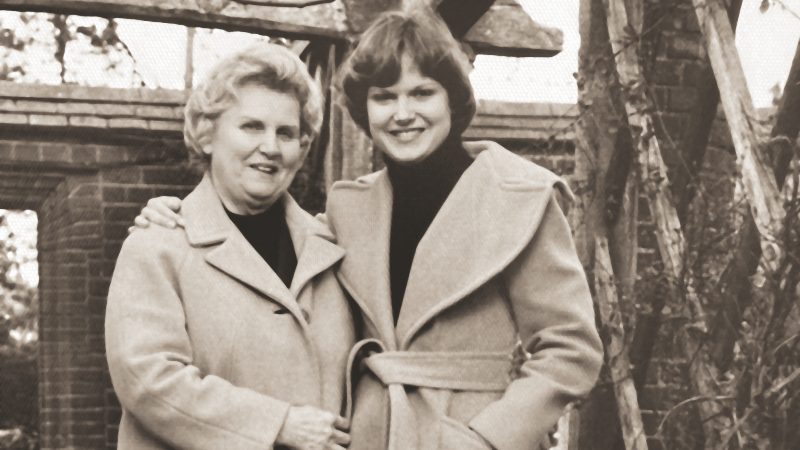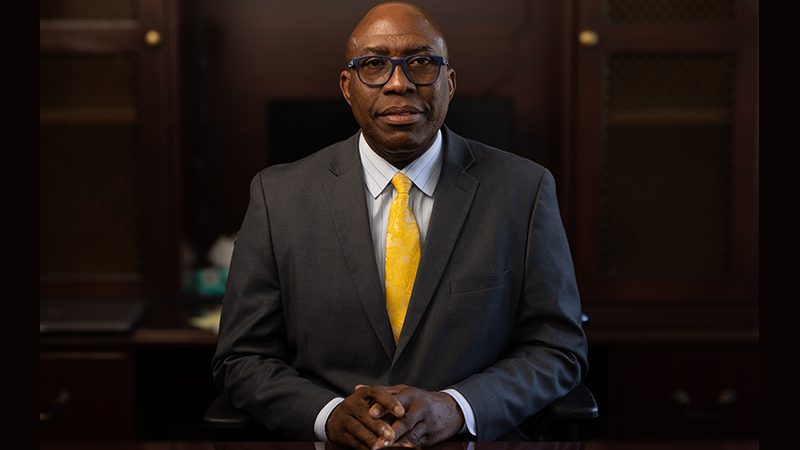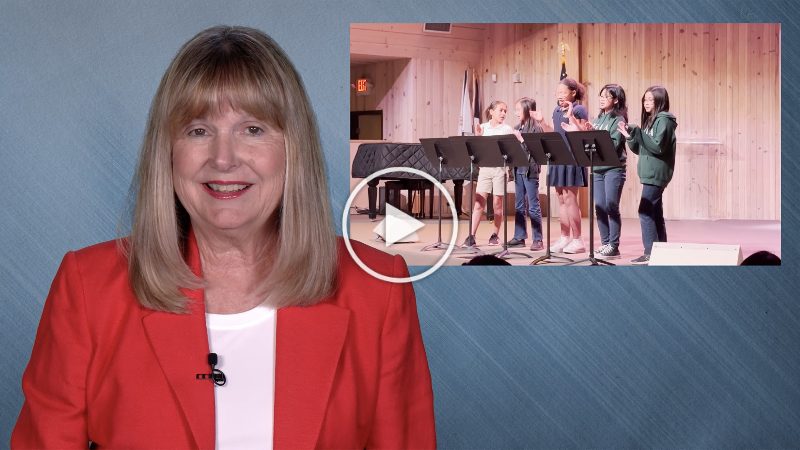
In the summer of 2009, Marvin Payne, then chair of the chemistry department at La Sierra University and summer program coordinator, approached Provost Warren Trenchard with an idea for a music experience for summer students.
“It started out as simply a jazz concert to provide entertainment and cultural enrichment for the students on campus for summer session,” explained Trenchard. “It grew into a whole lot more!”
A lot of that growth is due to Henry Franklin, renowned jazz bassist and Riverside local. Payne invited Franklin to be part of the initial concert, asking him to coordinate musicians, and Franklin easily agreed.
“Anything to do with preserving jazz catches my eye right away,” Franklin admitted. “We sat down and talked, and it all started from there.”
The first concert was a hit, and no one wanted to just leave it at that, so they began talking about how to make jazz at La Sierra a regular thing. And so Pierce Street Jazz—named after the street on which the first concert took place—was born.
“We realized we were helping to preserve the jazz culture of the area and wanted to keep it going,” Trenchard said. “As we acknowledged the current state of jazz in our area, we began to recognize more deeply the significance of preserving this genre.”
Pierce Street Jazz—or, as it is more colloquially known, PSJ—is now a jazz concert series, with performances several times a year. Franklin still brings together the musicians, pulling in various soloists to perform with what they call the PSJ “house band.” This house band is made up of Franklin on bass, Theo Saunders on piano, and two drummers who rotate concerts: Yayo Morales and Marvin “Smitty” Smith.
PSJ presents what jazz aficionados call “straight-ahead jazz,” which is most similar to the “bebop” style started by Black American musicians of the 1930s and ‘40s. This style developed as a response to big band style jazz, which was becoming increasingly popular in cities such as New York and Chicago and was beginning to nudge out Black musicians from the jazz scene, explained Trenchard.
“Straight-ahead jazz is different from smooth jazz, which is the music of Kenny G, for example,” he continued. “Smooth jazz is a fusion of modern pop and rock music. Most of the jazz you’ll find in Hollywood, for example, associated with Bill Evans, Louis Armstrong, Winton Marsalis, and others, is straight-ahead jazz.”

Franklin explains that jazz, as a genre, has a lot to do with improvisation—defined by Oxford Languages as “produc[ing] or mak[ing] something from whatever is available.” And while there is a way to teach the outline or basic idea of how to improvise, Franklin said, “you never improvise the same way two times in a row.” This is the heart of jazz—the art of this unique musical genre.
“It comes from your soul; from your heart,” Franklin added. “It’s what you’re feeling in that moment.”

Though PSJ is no longer located on Pierce Street, the name stuck. Today, the concerts are held in the Zapara School of Business at La Sierra University—supported by the School of Business, the office of the provost, and private donors—and feature soloists on a variety of instruments: saxophone, trumpet, flute, voice, guitar, trombone, vibraphone, harmonica, and many others. Admission is free, and the concerts last about two hours with a break in the middle. Though attendance is relatively unpredictable, PSJ has seen up to 200 attendees at a concert.
We want anyone to be able to come and enjoy the music.
“This kind of event is hard to find at all in our area,” Payne pointed out. “A lot of community members can’t afford to go to L.A. to see concerts like this with top-quality jazz artists, and travel is hard for some. We’re bringing a world-class event to our area, which is easy to get to and is free. We want anyone to be able to come and enjoy the music.”
It’s a great program. Those in the community who come regularly appreciate it a lot, because we’re offering top quality artists and music in a great location for free. Everything about PSJ is really special.

Franklin, who has recorded a gold record with Stevie Wonder and another with Hugh Masekela, and whose album “JID014” was given the 2023 NAACP Image Award for Outstanding Jazz Album, was raised in L.A. surrounded by nightclubs featuring jazz. He remembers when any and all jazz musicians worth their salt were working all the time, making music at nightly gigs.
“The jazz scene in our part of the world right now is terrible,” he stated. “PSJ is really the only true jazz venue in Riverside.”
This makes PSJ a notable addition to the culture scene in Southern California.
“It’s a great program,” Franklin said. “Those in the community who come regularly appreciate it a lot, because we’re offering top quality artists and music in a great location for free. Everything about PSJ is really special.”
La Sierra has a long-standing tradition of producing quality music through the Department of Music in the College of Arts and Sciences, and PSJ is just another way the university continues to make a name for itself in the region and beyond for its quality musical arts. Payne pointed out that the music department provides many excellent musical experiences throughout the school year, though their focus is more on classical and choral than jazz.
“We’re not the only people who want to provide music to the community,” Payne said, “but PSJ is a great way to share this particular art form. The people Henry brings out feel the same way, and they just love playing. So we get to see these skilled musicians who have spent their whole lives performing and enjoying jazz. It’s a spectacular opportunity to keep this genre alive in our area, while also introducing an important art form to our students and the community.”
Constantly looking for new ways to connect with the community, Zapara School of Business recently invited a local high school jazz band to play before a PSJ performance. They set up outside the venue and presented their own outdoor concert, then stayed for the PSJ concert.
“The kids in these ensembles are really into the art of it,” Payne pointed out. “They’d never met the kind of jazz legends they heard at the PSJ concert, and they had a blast. We want to do more of that—bringing in the new generation of jazz players to mingle with the older generations.”
Franklin loves being the driving force behind PSJ, and he wants to see the program continue for years to come.
“Jazz is America’s only true art form,” he said. “PSJ needs to keep doing what it’s doing. My dream for PSJ’s future is that it will fill every seat every time and continue to preserve jazz in Southern California.”
____________________
By Becky St. Clair
Pierce Street Jazz: Recuperar una forma de arte

En el verano de 2009, Marvin Payne, entonces presidente del departamento de química de La Sierra University y coordinador del programa de verano, se acercó al preboste, Warren Trenchard, con una idea para una experiencia musical para estudiantes de verano.
«Comenzó simplemente como un concierto de jazz para proporcionar entretenimiento y enriquecimiento cultural a los estudiantes en el campus durante la sesión de verano», explicó Trenchard. «¡Se convirtió en mucho más!»
Gran parte de ese crecimiento se debe a Henry Franklin, reconocido bajista de jazz de Riverside. Payne invitó a Franklin a ser parte del concierto inicial, pidiéndole que coordinase a los músicos, y Franklin aceptó rápidamente.
«Cualquier cosa que tenga que ver con preservar el jazz me llama la atención de inmediato», admitió Franklin. «Nos sentamos y hablamos, y todo comenzó a partir de ahí».
El primer concierto fue un éxito y nadie quería que eso fuese todo, así que comenzaron a hablar sobre cómo hacer del jazz en La Sierra algo regular. Así nació Pierce Street Jazz, llamado así por la calle en la que tuvo lugar el primer concierto.
«Nos dimos cuenta de que estábamos ayudando a preservar la cultura del jazz de la zona y queríamos mantenerla», dijo Trenchard. «A medida que reconocimos el estado del jazz en nuestra área, comenzamos a reconocer más profundamente la importancia de preservar ese género musical».
Pierce Street Jazz o, como se le conoce coloquialmente, PSJ, es ahora una serie de conciertos de jazz, con actuaciones varias veces al año. Franklin todavía reúne a los músicos, atrayendo a varios solistas para actuar con lo que llaman la «banda de la casa» de PSJ. Esa banda de la casa está formada por Franklin en el bajo, Theo Saunders en el piano, y dos bateristas que se rotan en los conciertos: Yayo Morales y Marvin «Smitty» Smith.
PSJ presenta lo que los aficionados al jazz llaman «jazz directo», que es más similar al estilo «bebop» iniciado por músicos afroamericanos de los años 30 y 40. Ese estilo se desarrolló como respuesta al jazz estilo «big band», que se estaba volviendo cada vez más popular en ciudades como Nueva York y Chicago y comenzaba a expulsar a los músicos negros de la escena del jazz, explicó Trenchard.
«El jazz directo es diferente del jazz suave, que es la música de Kenny G, por ejemplo», continuó. «El smooth jazz es una fusión de pop moderno y música rock. La mayor parte del jazz que encontrarás en Hollywood, por ejemplo, asociado con Bill Evans, Louis Armstrong, Winton Marsalis y otros, es jazz directo».

Franklin explica que el jazz, como género musical, tiene mucho que ver con la improvisación, definida por Oxford Languages como «producir o hscer algo de lo que esté disponible». Y aunque hay una manera de enseñar el esquema o la idea básica de cómo improvisar, dijo Franklin, «nunca se improvisa de la misma manera dos veces seguidas». Ese es el corazón del jazz, el arte de ese género musical tan especial.
«Viene de tu alma; desde tu corazón», agregó Franklin. «Es lo que estás sintiendo en ese momento».

Aunque PSJ ya no se encuentra en Pierce Street, el nombre se quedó. Hoy en día, los conciertos se llevan a cabo en la Zapara School of Business de La Sierra University, con el apoyo de la Escuela de Administración, la oficina del preboste y donantes privados, y cuentan con solistas en una variedad de instrumentos: saxofón, trompeta, flauta, voz, guitarra, trombón, vibráfono, armónica y muchos otros. La entrada es gratuita, y los conciertos duran aproximadamente dos horas con un descanso en medio. Aunque la asistencia es relativamente impredecible, PSJ ha visto hasta 200 asistentes en un concierto.
«Queremos que cualquiera pueda venir y disfrutar de la música»
«Ese tipo de evento es difícil de encontrar en nuestra área», señaló Payne. «Muchos miembros de la comunidad no pueden darse el lujo de ir a Los Angeles para ver conciertos como este con artistas de jazz de alta calidad, y viajar es difícil para algunos. Estamos trayendo un evento de clase mundial a nuestra área, al que es fácil llegar y es gratuito. Queremos que cualquiera pueda venir y disfrutar de la música».
«Es un gran programa. Aquellos en la comunidad que vienen
regularmente lo aprecian mucho, porque estamos ofreciendo artistas y música de alta calidad en una excelente ubicación de forma gratuita. Todo lo de PSJ es realmente especial»

Franklin, quien ha grabado un disco de oro con Stevie Wonder y otro con Hugh Masekela, y cuyo álbum «JID014» recibió el Premio NAACP Image 2023 como el Mejor Album de Jazz, se crió en Los Ángeles rodeado de clubes nocturnos con jazz. Recuerda cuando todos y cada uno de los músicos de jazz que valían la pena trabajaban todo el tiempo, haciendo música en conciertos nocturnos.
«La escena del jazz en nuestra parte del mundo en este momento es terrible», afirmó. «PSJ es realmente el único lugar de jazz verdadero en Riverside».
Eso hace que PSJ sea una adición notable a la escena cultural en el sur de California.
«Es un gran programa», dijo Franklin. «Aquellos en la comunidad que vienen regularmente lo aprecian mucho, porque estamos ofreciendo artistas y música de alta calidad en una excelente ubicación de forma gratuita. Todo lo de PSJ es realmente especial».
La Sierra tiene una larga tradición de producir música de calidad a través del Departamento de Música de la Facultad de Artes y Ciencias y PSJ es solo otra forma como la universidad continúa dándose a conocer en la región y más allá por sus programas musicales de calidad. Payne señaló que el departamento de música ofrece muchas excelentes experiencias musicales durante todo el año escolar, aunque su enfoque está más en la música clásica y coral que en el jazz.
«No somos las únicas personas que quieren proporcionar música a la comunidad», dijo Payne, «pero PSJ es una excelente manera de compartir esa forma de arte en particular. Las personas que Henry saca a relucir comparten esa opinión y les encanta tocar. Así que podemos ver a esos músicos expertos que han pasado toda su vida tocando y disfrutando del jazz. Es una oportunidad espectacular para mantener vivo ese género musical en nuestra área, al mismo tiempo que presentamos una forma de arte importante para nuestros estudiantes y para la comunidad».
Buscando constantemente nuevas formas de conectarse con la comunidad, la Zapara School of Business invitó recientemente a una banda de jazz de la high school local para tocar antes de una actuación de PSJ. Se instalaron fuera del local, presentaron un concierto al aire libre y después se quedaron para el concierto de PSJ.
«Los chicos en esos conjuntos están realmente interesados en el arte», señaló Payne. «Nunca habían conocido al tipo de leyendas del jazz que escucharon en el concierto de PSJ y se lo pasaron de maravilla. Queremos hacerlo más, traer a la nueva generación de músicos de jazz para mezclarse con las generaciones mayores».
A Franklin le encanta ser la fuerza impulsora detrás de PSJ y desea ver que el programa continúe en los próximos años.
«El jazz es la única forma de arte verdadera de los Estados Unidos», dijo. «PSJ necesita seguir haciendo lo que está haciendo. Mi sueño para el futuro de PSJ es que llene todos los asientos cada vez y continúe preservando el jazz en el sur de California».
____________________
Por Becky St. Clair





